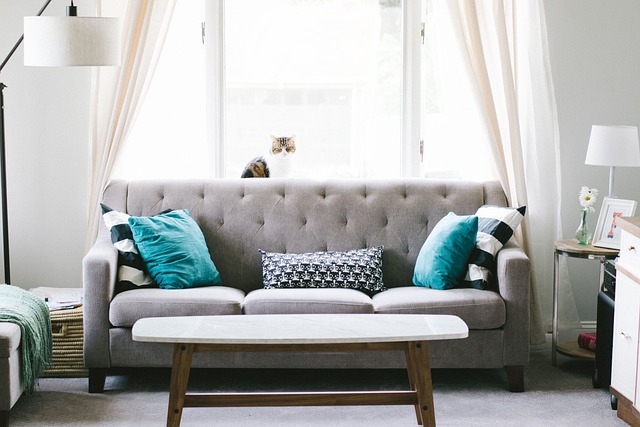Chromatic Couture: The Art of Monochromatic Room Design
In a world where vibrant colors and eclectic patterns often reign supreme, a new trend is quietly making waves in the realm of interior design. Monochromatic room design, once considered a minimalist's domain, has evolved into a sophisticated art form that's captivating homeowners and designers alike. This approach, which utilizes varying shades and tones of a single color, is transforming living spaces into cohesive, visually stunning environments that exude both elegance and warmth.

The Origins of Monochrome Mastery
The concept of monochromatic design isn’t new, but its current interpretation is far from the stark, clinical spaces of yesteryear. Rooted in color theory, this approach has its origins in the art world, where painters like Picasso experimented with monochromatic periods to evoke specific emotions and explore the depths of a single color.
In interior design, the monochromatic trend gained traction in the mid-20th century, aligning with the modernist movement’s emphasis on simplicity and function. However, it often resulted in spaces that felt cold and impersonal. Today’s monochromatic rooms are a far cry from these austere environments, embracing texture, depth, and subtle variations to create rich, inviting spaces.
The Psychology of Single-Color Spaces
Color psychology plays a crucial role in monochromatic design. Each color evokes specific emotions and can dramatically affect the mood of a space. For instance, a room designed in shades of blue can promote calmness and productivity, making it ideal for a home office or bedroom. Conversely, a space awash in warm yellows can energize and inspire, perfect for a living room or creative studio.
The power of monochromatic design lies in its ability to create a cohesive environment that can either soothe or stimulate, depending on the chosen color palette. This unified approach reduces visual noise, allowing the mind to relax and focus, which explains why many find monochromatic spaces inherently peaceful and organized.
Texture: The Secret Weapon of Monochrome
One might assume that a single-color room would be flat or boring, but skilled designers know that texture is the key to bringing these spaces to life. By incorporating a variety of materials and surfaces, a monochromatic room can become a tactile playground that invites touch and exploration.
Consider a living room designed in shades of gray. Velvet throw pillows in charcoal sit atop a plush, light gray sofa. A nubby wool rug in slate anchors the space, while glossy ceramic vases and matte concrete side tables add visual interest. Each element, though similar in color, offers a unique textural experience, creating depth and dimension within the monochromatic scheme.
Playing with Light and Shadow
Lighting plays a crucial role in monochromatic design, as it can dramatically alter the perception of color and space. Natural light showcases the subtle variations in tone throughout the day, while artificial lighting can be strategically placed to highlight textures and create depth.
Designers are experimenting with innovative lighting solutions to enhance monochromatic spaces. For example, color-changing LED systems can shift the entire mood of a room, transforming a cool blue space into a warm lavender haven at the touch of a button. This flexibility allows homeowners to adapt their environment to suit different occasions or moods without changing a single piece of furniture.
The Art of Tonal Variation
The true artistry in monochromatic design lies in the skillful use of tonal variations. By incorporating a range of shades within the chosen color family, designers create visual interest and prevent the space from feeling flat or monotonous.
A successful monochromatic room typically includes three key elements: a dominant shade, which covers the largest areas like walls; a secondary shade, used for larger furniture pieces; and an accent shade, reserved for smaller accessories and details. This tonal hierarchy guides the eye through the space, creating a sense of depth and dimension.
Monochrome in Practice: Room-by-Room Approaches
While monochromatic design can be applied to any room, each space presents unique opportunities and challenges. In kitchens, for instance, designers are embracing all-white palettes punctuated by subtle variations in texture and finish. Glossy subway tiles contrast with matte cabinetry, while marble countertops add natural veining for visual interest.
Bedrooms benefit from the calming effects of monochromatic design, with soft, muted colors like lavender or sage green creating tranquil retreats. Here, layering is key, with bedding, curtains, and rugs in varying shades and textures creating a cozy, enveloping atmosphere.
The Future of Monochromatic Design
As we look to the future, monochromatic design is poised to evolve in exciting ways. Advancements in material science are introducing new textures and finishes that can add unprecedented depth to single-color spaces. Meanwhile, the integration of technology, such as smart fabrics that can change color or pattern, promises to bring a new level of dynamism to monochromatic interiors.
Moreover, as sustainability becomes increasingly important in design, the simplicity and timelessness of monochromatic spaces align well with eco-conscious principles. By focusing on quality pieces in a cohesive color scheme, homeowners can create enduring interiors that resist passing trends, reducing the need for frequent redecorating.
Monochromatic room design is more than just a passing trend; it’s a sophisticated approach to creating harmonious, impactful spaces that resonate on a deep emotional level. As we continue to seek balance and tranquility in our homes, this artful use of color offers a compelling vision for the future of interior design. Whether embracing the serenity of all-white spaces or the drama of deep, moody hues, monochromatic design invites us to see our living spaces through a new, unified lens.





